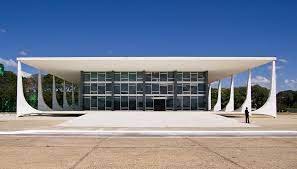A dispute over authority and strategies in the fight against Covid ignited an institutional conflict between the Executive and the Judiciary in 2020. This conflict extended itself to 2021, as the Government and its allies kept criticizing the Supreme Court (STF), which opened inquiries into the attacks. The crisis kept growing, and on September 7th, under fears of institutional rupture, it reached its peak, with nationwide acts against and pro-government. Tensions were reduced only after President Jair Bolsonaro disclosed an official statement to pacify the scenario.
This Content Is Only For Subscribers
To unlock this content, subscribe to INTERLIRA Reports.
THE BEGINNING OF THE DISPUTE
Divergencies between the Executive and the Judiciary powers about strategies to be implemented started soon after the beginning of the pandemic. While some Governors wanted to implement general isolation measures, the Federal Government’s intention was to reject them and to focus on specific groups. The stalemate led to a debate about who had the authority to implement measures to fight Covid. The dispute was settled by the STF, which ruled that states and cities have the power to enact measures of restraint on people. Even though the decision recognized that the central authorities could also draw up nationwide strategies, the STF ruling was seen as an act of interference by the Federal Government.
The opening of the “Fake News” inquiry by the Supreme Court also promoted an increase in the tension between the Federal Executive and the Judiciary. The STF opened a case to investigate the spread of fake news regarding the court and its ministers. Several supporters of President Bolsonaro were questioned. In response, a series of protests promoted by President supporters requested the shutdown of the STF,on April 19th. Following the protests, the court opened the so-called “Antidemocratic Acts” inquiry, to investigate the acts and politicians connected to them. The inquiries led to the arrest of two President’s allies, the Federal Deputy Daniel Silveira and the former Federal Deputy Roberto Jefferson.
CRISIS ESCALATION
On August 10th, the dispute gained momentum after Congress rejected the printed vote constitutional amendment (PEC). The PEC was supported by Bolsonaro and his allies, who accused the existing electronic ballot of being open to fraud. Superior Electoral Court (TSE) President Roberto Barroso, who is also a STF minister, refuted the idea, arguing that the current system was totally secure. According to the TSE, the President’s public allegations that the electronic system was fraudulent were disinformation and it requested the STF to investigate. STF Minister Alexandre de Moraes accepted the request, and Bolsonaro himself started to be investigated under the “Fake News Inquiry”.
Bolsonaro filed an impeachment request against Alexandre de Moraes in the Senate and threatened to prepare one against Barroso, claiming that the ministers’ actions went beyond their constitutional rights. On the 25th of September, the request was rejected by the Senate.
SEPTEMBER 7TH PROTESTS AND THE TRUCK DRIVERS’ STRIKE
The apex of this crisis was reached on September 7th, Brazilian Independence Day, when thousands took to the streets in acts pro and against the government in the 27 Brazilian capitals. The opposition demanded the President’s impeachment. Pro-government protesters requested the printed vote and the shutdown of the STF. President Bolsonaro went himself to 2 events. During the events, he vehemently criticised the STF and Minister Moraes, stating that he would no longer comply with the minister’s decisions, which would be considered a crime.
In the ensuing days, a truck drivers’ strike called by supporters of the President started to grow. Road blockades were reported in at least 15 states. The truckers’ main demand was also the closing of the STF. The President himself and the movement leaders had to request the drivers to demobilize, fearing greater consequences to the economy, since on September 8th the Brazilian stock market had already fell by 3,78%.
The crisis was placated by former President Michel Temer. He helped Bolsonaro to write the “Declaration to the Nation”, a pacification statement in which he indicated that he never had any “intention to attack any of the powers”.
THE OUTCOME AND PERSPECTIVES
According to political analysts, the objective of the Declaration to the Nation was to calm things down, especially to reduce increasing pressure for the President’s impeachment, and to preserve the economy.
However, some negative reactions could not be avoided. The Brazilian Social Democracy Party (PSDB), which has 40 Congressmen, decided to integrate the opposition. The statement also disappointed some of Bolsonaro’s supporters, who saw this as a defeat. Due to that, analysts believe that the Government may reignite tensions to recover support in the future.




